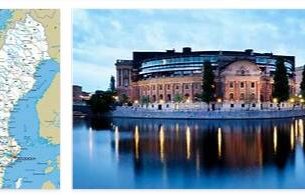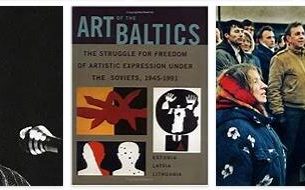Croatia – pearl on the Mediterranean
Today’s Croatia was created in 1990.
After democratic elections, Croatia left the old federal state of Yugoslavia and proclaimed its independence and sovereignty. At the same time, a Belgrade- ordered uprising of part of the Serbian population took place. This led to aggression on the part of the Yugoslav People’s Army and on the part of Yugoslavia against the Republic of Croatia.
On December 23, 1991, Germany recognized the Republic of Croatia as an independent state. The remaining EU states joined a little later on January 15, 1992 and thus initiated the international recognition of the new state.
Together with Albania, the country became a member of the 28-member NATO on April 1, 2009.
On July 1, 2013, Croatia became the 28th member of the European Union (EU).
| Name of the country | Republika Hrvatska, Republic of Croatia |
| Form of government | parliamentary-democratic republic |
| Geographical location | Croatia stretches from the extreme eastern foothills of the Alps in the northwestto far into the Pannonian Plain,
to the banks of the Danube in the east; the central part is dominated by the Dinara massif and the southern part ends on the coast of the Adriatic Sea. |
| National anthem | Lijepa naša domovina, our beautiful home |
| National holiday | June 25 – the day of the declaration of independence, 1991 |
| Independence | Declaration of independence on June 25, 1991Recognition by Germany together with other EU states on December 23, 1991 – with effect from January 15, 1992 |
| Population | about 4.4 million (Credit: Countryaah: Croatia Population) |
| NATO and EU membership | since April 1, 2009 (NATO) or since July 1, 2013 (EU) |
| Ethnicities | 90% Croatians; 4.5% Serbs; 5% others such as Bosniaks, Italians, Hungarians, Albanians, Slovenes,Czechs, Roma, Montenegrins, Slovaks, Macedonians |
| Religions | 88% Roman Catholic, 4% Serbian Orthodox, 1% Muslim |
| Languages | Croatian, also Serbian, Italian and Hungarian |
| Capital | Zagreb with approx. 790,000 residents is the economic,cultural and academic center as well as the transport hub of the country. |
| Tourist office | Croatian National Tourist Board in FrankfurtStephanstraße13
60313 Frankfurt am Main Tel: 0049 – (0) 69 – 2385350 E-mail: info@visitkroatien.de www.kroatien.hr |
| Surface | The mainland area is 56,538 km² and the area of territorial waters is 31,067 km² |
| Highest mountain | Dinara with a height of 1,831 m above sea level |
| Longest river | Save (“Sava”) with a length of 945 km (562 km through Croatia) |
| Largest lake | Vransko jezero with an area of approx. 30 km² |
| International license plate | MR |
| National currency | Kuna (KN); 1 kuna = 100 lipa |
| Time difference to CET | = CET |
| International phone code | 00385 |
| Mains voltage, frequency | 230 V/50 Hz. (No socket adapter is required.) |
| Top Level Domain (TLD) | .Mr |
| License plate of Croatia | MR |
Croatia: history
Croatia is special not only because of its clean and blue sea. The different cultures that have alternated in this area over the millennia also made the country something special.
According to Abbreviationfinder website, the Adriatic Sea is not only a gulf with which the Mediterranean has penetrated deep into the European mainland and thus created the most economical transport route between Europe and the East, but it is also the cradle of ancient civilization.
Numerous material evidence of this has been preserved, slowly emerging from the depths of Adriatic caves and from the azure depths of the sea.
It was found that the eastern Adriatic coast was already populated at the beginning of the Younger Stone Age. In addition, evidence was found that most of the accessible islands were inhabited (e.g. from findings in caves on the island of Hvar, on the island of Palagruza, etc.).
Thanks to the favorable geographical features of the coast, which is divided by numerous large and small bays, this coastal strip has always been an important trade and transport route.
Archaeological finds have established that the ancient Greeks lived in the 6th century BC. They maintained shipping traffic with the Illyrians and founded their colonies here (e.g. Pharos – today’s Starigrad on the island of Hvar, Issa – today’s Vis on the island of the same name.) Later came the Romans, who not only built palaces and summer houses, but also sailed the seas intensely. There are many submarine sites scattered across the seabed from Pula to Cavtat. Most of them are finds of amphorae, which at that time represented the everyday packaging in which everything was stowed: from wine to grain and fragrances. You can dive in many places and come across the remains of ancient ships and their cargoes.
Perhaps one of the most valuable finds from this period are the remains of huge pottery (“pithos”) that were built into the ships and were used to ship bulk goods (grain and the like). One site is not far from Cavtat, another near the island of Murter.
After the arrival of the Slavs in this area, a new period began, which was characterized by constant struggles for supremacy and defense against various enemies. Dubrovnik became a republic that set a good example in culture and trade. A shipwreck from the 17th century bears witness to those times. It is a galley that left Venice and loaded Murano glass, window glass and other valuable items. She was also armed with cannons. The galley sank during a storm near the island of Olipe, not far from Dubrovnik.
In the 18th century Napoleon came, who was replaced by Austria after a short period of rule. In the course of the following centuries Austria and Italy fought for supremacy on the east coast, culminating in the “Viska bitka”, the battle for Vis, in 1866. On the one hand was the Austrian fleet, led by Tegetthoff, who was on the armored frigate “Archduke Ferdinand Max”, and on the other hand was Admiral Persano as the commander of the Italian fleet. In the course of the battle Tegetthoff sank the ship of Persano, which was on the ironclad Re d’Italia. After that, the Italians began to withdraw, admitting defeat.
The rule of the Austro-Hungarian monarchy followed. Ports and breakwaters were built and reinforced, trade and shipbuilding flourished. During the two world wars, the Adriatic was one of the more important battlefields, as evidenced by a large number of wrecks. Around Pula, the then important naval port, around 20 wrecks from that time have been found: submarines, destroyers and torpedo boats. The Adriatic Sea has always been an important link between the East and the West, which can be seen today in the remains that remind us not to forget the past but to understand it as a lesson for the future.
Together with Albania, the country became a member of the 28-member NATO on April 1, 2009.
In the runoff election on January 10, 2010, the social democrat Ivo Josipovic became the new president of Croatia with 64.6% of the vote. His opponent, the long-time mayor of Zagreb, Milan Bandic, received 35.3%.
Since July 1, 2013, Croatia has been the 28th member state of the European Union (EU)
The following are the most important historical data for the country in tabular form:
| Around AD 620 | Immigration of Croatians from the nor |
| up to 925 | Under Byzantine and Frankish suzerainty |
| 925 | Independent kingdom under King Tomislav |
| 1102 | Beginning of Hungarian, later Austro-Hungarian sovereignty; until 1918 all of Croatia belongs to the Habsburg monarchy. |
| December 01, 1918 | Kingdom of Serbs, Croats and Slovenes; Istria and Zadar come to Italy |
| 01/06/1929 | Kingdom of Yugoslavia |
| 04/06/1941 | German troops march into Yugoslavia |
| 04/10/1941 | “Independent State of Croatia” as a Ustaše state under leader Ante Pavelic |
| Nov. 1941-1943 | Istria and some coastal areas are annexed by Italy |
| 11/29/1945 | Socialist Federal Republic of Yugoslavia under Tito |
| 06/28/1948 | Break with Moscow |
| 1970/71 | “Croatian Spring”: national-democratic mass movement led by intellectuals and students together with the Croatian party leadership, crackdown by the Yugoslav government |
| 05/04/1980 | Tito’s dea |
| April 8, 1990 | Tudjman becomes President of the Croatian Republic Presidium. |
| May 1990 | HDZ wins the absolute majority in the first free parliamentary elections. |
| 03/17/1991 | The “Serbian Republic of Krajina” declares itself independent. |
| 06/25/1991 | Declaration of Independence of Croatia |
| 23.12. 1991 | Recognition by Germany together with other states of the European Community – with effect from January 15, 1992 |
| from Sept. 91 | War in Croatia |
| December 23, 1991 | Recognition by Germany and most other EU states with effect from January 15, 1992 |
| 01/19/1992 | Establishment of diplomatic relations by Germany |
| 04-07.08.1995 | Croatian recapture of the Serbian-controlled Krajina |
| 11/12/1995 | Agreement between Erdut and the authorities of the Serb-controlled areas in Eastern Slavonia, Baranja and Western Syrmia on reintegration in Croatia |
| 12/14/1995 | Croatia is one of the signatories to the Dayton Agreement. |
| 08/23/1996 | Normalization Agreement between Croatia and the Federal Republic of Yugoslavia |
| 11/06/1996 | Admission of Croatia to the Council of Europe |
| 03/01/2000 | Parliamentary election results in new government under social-democratic leadership (6-party coalition) |
| May 27, 2000 | Admission of Croatia to the “Partnership for Peace” |
| October 29, 2001 | Signing of the Stability and Association Agreement with the EU |
| 02/21/2003 | Application to join the European Union |
| 11/23/2003 | The parliamentary elections lead to a new government under the leadership of the HDZ. |
| 06/18/2004 | European Council awards Croatia candidate status |
| 12/17/2004 | The European Council names March 17, 2005 as the likely start of accession negotiations with Croatia. |
| 04/01 2009 | Member of NATO, which now comprises 28 member countries |
| 07/01/2013 | Member of the EU, which now comprises 28 member countries |



